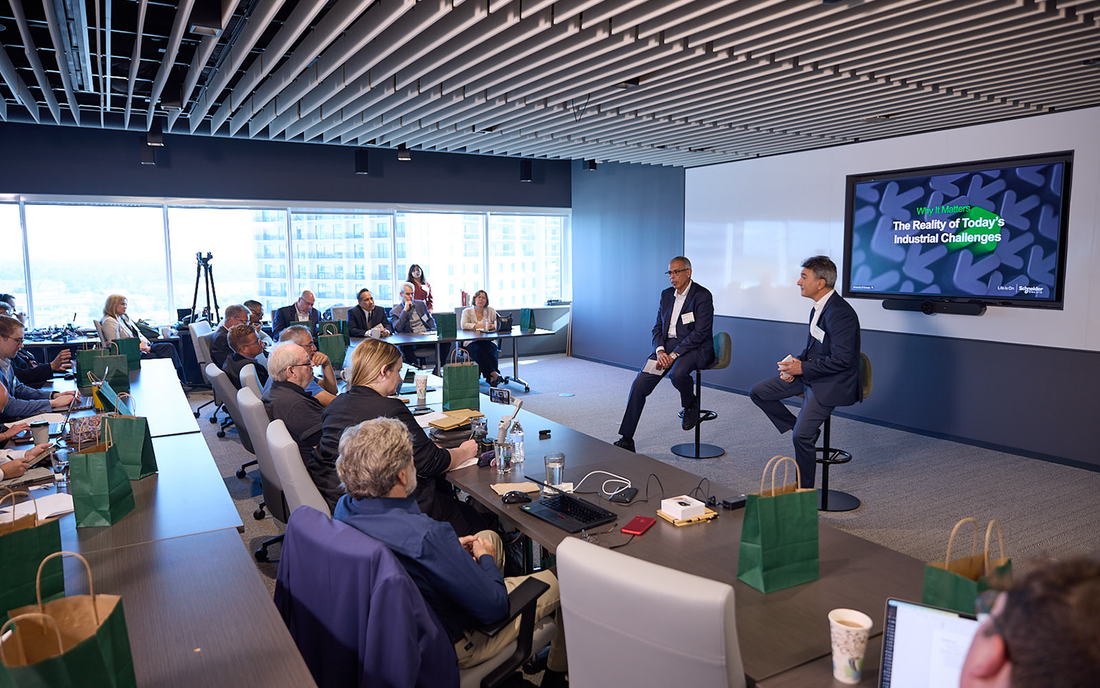
Schneider Electric Drives Open, Software-Defined Automation for Manufacturing
Share

Schneider Electric champions a manufacturing revolution. They promote open, software-defined automation (OSDA). This movement builds an open, flexible ecosystem. It gives customers resilient and adaptable systems. Manufacturing faces many challenges today. Complex rules, short product cycles, and talent gaps slow things down.
Moving Beyond Closed Systems
Traditional, closed, hardware-driven systems limit manufacturers. They cannot meet today's industry demands. Ali Haj Fraj, head of Digital Factory, Schneider Electric, stated this. Hany Fouda, SVP of Process Automation, agrees. Manufacturers need OSDA to succeed in the future. OSDA makes it easier for manufacturers. They can transition to agile, digital operations. This movement creates an interoperable automation ecosystem. This gives customers both flexibility and resilience. Fouda and Fraj spoke at Schneider's Houston Innovation Center. This center focuses on OSDA implementation.
Defining OSDA's Core Concepts
Traditional automation starts with hardware choice. Then, it creates specific software for that hardware. Schneider champions a two-part approach. First is open automation. Second is software-defined automation. Together, they form OSDA.
Open automation uses open standards. These standards allow integrating devices from many vendors. Schneider solutions support third-party software and hardware. They rely on the Universal Automation Organization standard.
Software-defined automation (SDA) separates control logic from hardware. This divorce makes systems more programmable. It also makes them more flexible and scalable, Fraj explained. Combining these concepts creates OSDA. It allows for a vendor-neutral system.
Fouda compared OSDA to the music industry's evolution. Music moved from cassette hardware to Spotify's digital access. Similarly, automation is now digital. Users access it from anywhere, using suitable hardware and software. EcoStruxure Automation Expert (EAE) is Schneider's OSDA solution. It supports discrete, hybrid, and process industries. EAE manages all control applications.
The Four Pillars of OSDA
Schneider Electric outlined four key tenets of OSDA. These tenets apply specifically to EAE.
-
Hardware independence: Manufacturers freely choose the best hardware. They can integrate any third-party solution.
-
Distributed intelligence: OSDA dynamically distributes control logic. Edge devices adapt control in real-time.
-
Application centric: Users manage all processes with one application.
-
Digital continuity: Get both IT and OT data easily. This allows for fast, informed decision-making.
Solving Critical Industry Problems
OSDA directly addresses common industry issues.
First, it solves vendor lock-in. Proprietary legacy systems restrict users to one vendor. OSDA uses open standards for freedom. Second, OSDA provides much-needed flexibility. Legacy systems cannot scale or adapt easily. OSDA infrastructure supports dynamic reconfiguration. Third, it combats complexity and the skills gap. OSDA simplifies programming and configuration. This helps teams manage labor shortages.
OSDA in Action: Real-World Case Studies
Schneider's OSDA platform shows its value in practice.
The City of Conroe modernized its water infrastructure. They deployed EcoStruxure Automation Expert (EAE). EAE now runs 19 water and wastewater facilities. This upgrade accelerates infrastructure delivery. It also supports sustainable development. The collaboration resulted in a $50M infrastructure upgrade. It reduced water loss and improved cybersecurity.
Swiss recycler GR3N also partnered with Schneider. They launched the world's first open automation system for plastic recycling. Their Italian site debuted the system in March 2024. EAE helps manage their advanced MADE technology. The first industrial facility will process 40,000 tons of waste annually. Its modularity and shared automation runtime boost efficiency.
Sanjith Singh, VP of software-defined automation, summarized OSDA's value. He said OSDA technology lets the market move faster. It helps solve real-life problems efficiently.
